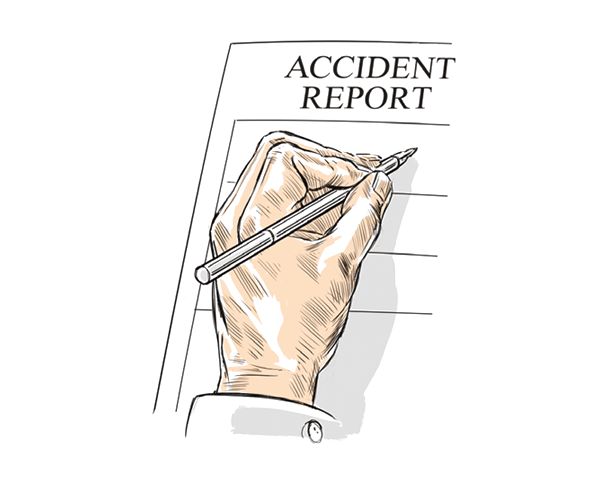Stay focused…
Cessna P210N
N3896P
Detroit, MI
Injuries: Two fatal, one serious
As the pilot approached his destination after a cross-country flight, the aeroplane’s landing gear did not fully extend. Over the next seven minutes the pilot attempted to troubleshoot the landing gear in the airport traffic pattern before he reported to the tower controller, “Well, I just burnt outta fuel, we’re totally out bud.”
“While troubleshooting the landing gear problem, the aircraft ran out of fuel”
The tower controller immediately cleared the pilot to land. However, there was no additional communication from the pilot and the final radar return was recorded about 180ft agl and about a mile north-west of the runway. The aeroplane impacted trees and an electricity service line in an urban residential area.
A post-crash fire destroyed most of the forward fuselage and cockpit area and the extensive impact and fire damage to the landing gear extension / retraction components precluded determination as to why the landing gear did not fully extend during the flight.
Although the pilot had departed on the flight with enough fuel to reach his intended destination, he did not have enough fuel remaining to adequately address the landing gear malfunction before the aeroplane had a total loss of engine power due to fuel exhaustion.
Based on the recorded transmissions between the pilot and the tower controller, the aeroplane only had about seven minutes of fuel remaining when the pilot first reported the landing gear malfunction to the tower controller.
Comment This emergency should not have ended the way it did, but in becoming preoccupied by an undercarriage that refused to lower, the pilot missed the real threat to life – running out of fuel. Of course, the pilot should have diverted due to low fuel well before this situation arose. Even without the undercarriage emergency, a bulked approach or some other unforeseen event at the destination airfield may well have ended with the same outcome.
Loose canopy
SubSonex
N224P
Latrobe, PA
Injuries: None
The pilot reported that after take-off in a homebuilt jet, the canopy ‘shimmied open about two foot aft’ and that he immediately reached for the canopy with his left hand while his right hand was on the control stick. The aeroplane was a few feet above the runway surface when he applied slight forward pressure on the control stick. The aeroplane’s nose pitched down, and the nose landing gear impacted the ground. The aeroplane veered right, the main landing gear collapsed, and the aeroplane then slid to a stop on the runway. The pilot reported that he did not complete the pre-departure checklist to secure the canopy because he was adjusting the recently installed radio and headset. The aeroplane sustained substantial damage to the left wing.
Comment Once airborne the pilot was faced with a choice of two evils, hold on to the canopy or risk letting it continue to open, where it most likely would have separated. As the aircraft was a jet, with the engine located on the upper rear aft fuselage, any debris from the separation may have been ingested by the engine.
Unfamiliar approach
Van’s RV-9
G-CDXT
Private airstrip, Whippingham, Isle of Wight
Injuries: None
The pilot had planned to fly on an overseas trip in G-CDXT, an aircraft owned by a friend. Most of the pilot’s flying experience had been gained on taildragging aircraft and he owned a Piper Cub, which he operated from a 580-metre long private grass airstrip on the Isle of Wight.
A few weeks prior to the accident, the pilot had flown G-CDXT with the owner to familiarise himself with it. The flight had taken place at Clacton Airfield which has a grass runway just over 500m in length. The dual flight was uneventful and the pilot then undertook a solo flight in the aircraft, with no problems.
On the day of the accident, the pilot had flown in his Piper Cub to a private airstrip in Sussex to collect G-CDXT and fly it back to the airstrip he used on the Isle of Wight.
On his return, the weather was good with a westerly wind of about 10kt. The pilot positioned G-CDXT for an approach to the grass strip, which was orientated into wind. He reported he had been deliberately low on the approach and that just prior to landing the aircraft had encountered wind shear, causing it to lose height. The pilot thought the aircraft would hit a low hedge situated at the boundary of the airfield and applied a nose-up elevator to avoid it. He did not apply power at the same time. The aircraft stalled, hitting the ground near the start of the airstrip sufficiently hard to cause the undercarriage to collapse and damaging the propeller, wing leading edges and fuel tank.
The pilot considered that had he flown the normal approach path he would have had sufficient height to lower the nose of the aircraft when encountering the wind shear in order to maintain speed. He further commented that the Piper Cub he normally flew had the throttle on the left, whereas the throttle on G-CDXT was on the right. He believes this contributed to him not applying power when he applied a nose-up elevator to avoid the hedge.
Comment Operating into confined strips brings with it a whole load of stress, and the pilot rightly commented after the event that ‘it may have been beneficial to have gained more experience at a larger airfield before trying to operate to the more challenging airstrip’.
Lowering the nose in the event of wind shear might have its place but only when height and a choice of touchdown point allows.
Forced landing…
Reims Cessna F152
G-BTAL
Shobdon Aerodrome, Herefordshire
Injuries: None
The pilot had not flown for several months due to public health restrictions and on the day of the incident was planning to complete three circuits to regain recency.
“Having read about previous accidents he was not tempted to turn back”
The first two circuits were uneventful. He took off for the third circuit with the flaps up and full power. As the aircraft reached 300-400ft the engine lost all power. The pilot described it feeling like ‘someone had pulled the throttle to idle’. He immediately lowered the nose and selected a field slightly to his left. He recalled that the power returned briefly then reduced again but he decided to close the throttle and treat the engine as completely failed. He made a Mayday call then focused on the landing.
The pilot landed the aircraft with the flaps up in a slight crosswind. As the aircraft touched down he noticed a ditch crossing the aircraft’s track and decided to pull back on the control column to pass over it. Once clear of the ditch he brought the aircraft to a halt and shut the engine down. The aircraft was not damaged and the pilot was able to exit the aircraft normally.
The pilot reported that he had been trained to think through all possible outcomes and had considered different engine failure scenarios at the airfield prior to the event. He also always briefed himself on his actions in the event of an engine failure prior to each take-off.
He believed this helped him manage the situation on the day. He had recently completed ATPL ground exams and had read various articles and reports about managing engine failures and potential pitfalls. These had taught him to treat a partial engine failure as a complete engine failure, not to try to turn back to the airfield, and the importance of flying the aircraft first.
The maintenance organisation recovered the aircraft and conducted a detailed inspection. It was unable to identify the cause of the loss of power but suspected carburettor icing. The air temperature was 29°C with a dew point of 17°C, suggesting serious carburettor icing was likely at descent power. The pilot reported that he used the carburettor heat for at least 10 seconds while flying downwind and did not detect any icing. He selected the carburettor heat again before he reduced power for descent and kept it on until landing.
The aircraft was returned to flying and at the time of writing no further engine problems had been encountered.
Comment The pilot attributed the safe outcome to having planned and reviewed his actions in the event of an engine failure prior to taking off.
This freed sufficient capacity such that, when the event occurred, he could focus on flying the aircraft. He also treated the partial failure as a complete failure. Having read about previous accidents he was not tempted to turn back and instead selected a field ahead and focused on landing.







